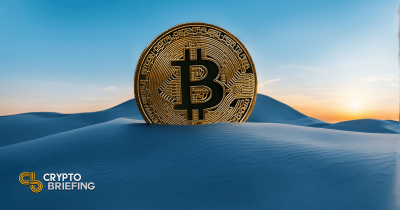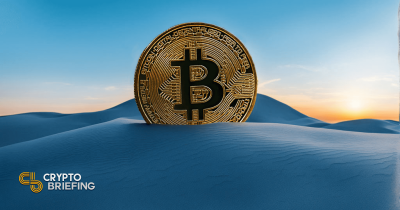Crypto
Home » Markets » Iran-Israel crisis could drive investors with ‘debasement trade’ favoring Bitcoin and gold — JPMorgan
Crypto Gold price surge linked to US dollar decline and Treasury yield drop.

Key Takeaways
- Gold prices have surged past expectations due to a weakening dollar and falling Treasury yields.
- Bitcoin is expected to follow gold’s price trend despite a current negative correlation.
Share this article
Rising geopolitical risks and the upcoming US presidential election are pushing investors towards traditional safe-haven assets like gold, while Bitcoin faces selling pressure amid Middle East conflicts, in particular with the recent tensions between Israel and Iran.
J.P. Morgan analysts suggest increasing global tensions and November’s US election are reinforcing what some call the “debasement trade,” favoring both gold and bitcoin as hedges against currency devaluation. However, recent market movements show diverging paths for the two assets.
“Rising geopolitical tensions and the coming US election are likely to reinforce what some investors call the ‘debasement trade’ thus favoring both gold and bitcoin,” J.P. Morgan Global Markets Strategy analysts stated in a note on Thursday.
Gold prices have surged in recent weeks, approaching $2,700 per ounce on September 26. The analysts attribute this rise to a 4-5% decline in the dollar and a significant drop in real US Treasury yields. However, gold’s appreciation has exceeded what these factors alone would suggest, indicating renewed interest in the metal as a safe haven.
CryptoQuant highlighted historical trends where lower US Treasury yields correlated with rising gold prices. “In 2008, as the 13-week Treasury Bill yields decreased, gold prices soared from $590 to a peak of $1,900 per ounce by 2011,” the firm noted. “A similar trend is emerging now, with gold climbing from $2,000 to nearly $2,700.”
While gold benefits from the current macroeconomic environment, Bitcoin has faced selling pressure amid escalating Middle East tensions. US spot Bitcoin ETFs reversed an eight-day inflow streak with significant outflows as Bitcoin retreated below $62,000 following Iran’s missile attacks on Israel.
Data from Farside Investors shows that BlackRock’s iShares Bitcoin Trust (IBIT) was the only fund to see net inflows on Tuesday, taking in over $40 million. However, this was insufficient to offset outflows from other funds, resulting in over $242 million in net outflows across US spot Bitcoin ETFs.
The contrasting movements of Bitcoin and gold have reignited debate about Bitcoin’s role as a safe-haven asset. As news of Iran’s missile strikes broke, Bitcoin’s value declined by over 3% in 24 hours, dropping nearly $4,000 to around $60,300. Meanwhile, gold prices increased by 1.4% to $2,665 per ounce, nearing a record high.
The Crypto Fear and Greed Index dropped from a neutral 50 points to 42 points, indicating increased caution among crypto investors as geopolitical risks intensify. Israeli Prime Minister Benjamin Netanyahu’s vow to retaliate against Iran has further heightened tensions, potentially leading to additional market volatility.
While J.P. Morgan analysts see potential for both gold and Bitcoin in the “debasement trade,” current market dynamics demonstrate gold’s stronger appeal as a safe haven during times of geopolitical uncertainty. Bitcoin’s recent price action and ETF outflows suggest that the cryptocurrency may still be viewed as a risk asset by many investors, despite its long-term potential as a hedge against currency devaluation.
As global tensions persist and the US presidential election approaches, investors will likely continue to closely monitor the performance of both gold and Bitcoin as potential safe-haven assets in an increasingly uncertain geopolitical landscape.
Share this article


